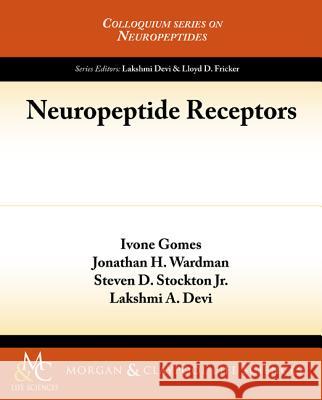Neuropeptide Receptors » książka
Neuropeptide Receptors
ISBN-13: 9781615044689 / Angielski / Miękka / 2013 / 167 str.
Describes the general structure of G protein-coupled receptors, including the information obtained from crystal structure determination that has given an insight into the activation mechanism of these receptors. In addition, the book summarizes the components of the signal transduction system (including G proteins, effectors and second messengers generally activated by the neuropeptide receptors).
Neuropeptides mediate their effects by binding and activating receptors that are responsible for converting these extracellular stimuli into intracellular responses. Most neuropeptides interact with G protein-coupled receptors that transduce the signal by activating heterotrimeric G proteins leading to alterations in second messenger systems to amplify the signal and elicit the intracellular response. In this review, we describe the general structure of G protein-coupled receptors including the information obtained from crystal structure determination that has given an insight into the activation mechanism of these receptors. In addition, we summarize the components of the signal transduction system (including G proteins, effectors and second messengers generally activated by the neuropeptide receptors). Using select examples of neuropeptide-receptor systems, we highlight the neuropeptides and corresponding receptors involved in modulation of pain and analgesia, body weight regulation, and hormonal regulation. Finally, we discuss the enzyme-linked tyrosine kinase receptors activated by growth factors and discuss the emerging concepts in targeting neuropeptide receptors for the identification of novel therapeutics targeting these systems.Table of Contents: Abbreviations / Overview of Neuropeptide Receptors / G Protein-Coupled Receptors: General Structure & Function / G Protein-Coupled Receptor Signaling / Neuropeptide Processing and Regulation / Neuropeptide Receptors / Perspectives / References











